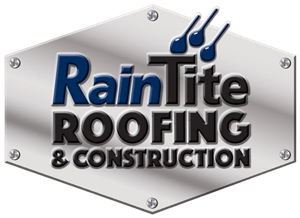Hailstorms can be disastrous for your home, particularly for your roof. In Rapid City, where hailstorms are more common, homeowners need to be prepared to handle the damages and protect their homes from further problems. Hail can cause extensive damage to various roofing materials, resulting in leaks and even affecting your home’s structural integrity. In this comprehensive guide, we will help you understand hail damage, learn how to identify and assess it and explore the best course of action for repairing and protecting your roof.
Damage caused by hail can range from minor cosmetic blemishes to severe structural flaws. A crucial aspect of dealing with hail damage is early detection, which allows you to address issues before they become more significant, costlier problems. Additionally, various roofing materials react differently to hail – as such, it’s important to know the signs of damage depending on your roof type, including asphalt shingles, wood shake, metal, and tile.
The Science Behind Hailstorms and Their Impact on Roofing Materials
Hailstorms occur when strong updrafts within thunderstorms propel raindrops into the freezing upper regions of the atmosphere. These frozen raindrops accumulate layers of ice as they move within the storm before becoming too heavy for the updrafts to support. As a result, hailstones fall, often striking roofs and other structures with significant force. Depending on the size, density, and speed of the hailstones, the damage to roofing materials can be substantial, requiring immediate attention and repairs.
How Different Types of Roofing Materials Respond to Hail Damage
Different roofing materials have varying degrees of resilience against hail damage. Understanding these differences can help inform your decisions about the roofing material best suited for your home.
– Asphalt Shingles: Affordable and widely used, asphalt shingles are susceptible to hail damage. Hail can leave dents, cracks, or granule loss on shingles, potentially leading to leaks and further damage if not addressed promptly.
– Wood Shake: While characterized by a unique appearance, wood shake roofing can suffer cracks and splits due to hail impact. This can compromise the roof’s waterproofing capabilities and lead to eventual leaks.
– Metal Roofing: Metal roofs are known for their durability and resistance to most hail damage. However, larger hailstones can leave dents and damages to the protective coating, which may lead to corrosion over time.
– Tile Roofing: Ceramic or clay tile roofs offer excellent hail resistance, but they are not indestructible. Hailstones can cause chips, cracks, or breakage, reducing their effectiveness at protecting your home.
Common Signs of Hail Damage and Tips for Detection
Detecting hail damage early is critical to minimize costs and protect your home. Here are some key signs of hail damage and tips to help you identify any issues:
1. Exterior Inspection: Following a hailstorm, carefully examine your home’s exterior, including gutters, siding, and window casings, for dents, cracks, or other signs of hail impact. This may indicate potential roof damage.
2. Granule Loss: Check for excessive granule loss in your gutters, or on the ground around your home, as this can signify asphalt shingle damage.
3. Damage to Roof Accessories: Inspect roof accessories such as vents, flashing, and skylights for dents or other damage, which may result from a hailstorm.
For a thorough inspection, consider contacting RainTite Roofing & Construction for professional assistance in assessing your roof’s condition.
A Step-by-Step Guide to Assessing Hail Damage on Your Roof
To effectively assess hail damage on your roof, follow these crucial steps:
1. Safety First: Exercise caution when inspecting your roof, using a ladder and safety equipment if necessary. Alternatively, rely on a professional roofing inspector to avoid personal risk.
2. Document the Damage: Use a camera or smartphone to photograph any visible damage, as this evidence can be helpful when filing insurance claims.
3. Inspect Shingles: Check for dents, cracks, bruising, or granule loss on asphalt shingles; cracks or breakage on tile roofs; and dents or damages to the protective coating on metal roofs.
4. Check for Leaks: Examine your attic and any interior walls or ceilings for signs of water damage or leaks resulting from the hailstorm.
5. Consult a Professional: For a comprehensive assessment, consult with RainTite Roofing & Construction to receive an expert evaluation of your roof’s hail damage and guidance on necessary repairs or replacements.
Preventative Measures to Protect Your Roof from Future Hailstorms
While hailstorms may be unpredictable, there are preventive measures homeowners can take to minimize potential damages:
1. Roofing Material Selection: Choose hail-resistant materials, such as metal or impact-resistant shingles, to better protect your roof.
2. Regular Maintenance: Schedule routine roof inspections and maintenance to ensure your roof remains in optimal condition and can better withstand hail damage.
3. Attic Insulation and Ventilation: Proper attic insulation and ventilation can help prevent ice dams and provide an added layer of protection against hail damage.
Conclusion
Dealing with hail damage can be a daunting and overwhelming task for homeowners. By understanding the science behind hailstorms, their impact on different roofing materials, and the critical steps in assessing and addressing hail damage, you can be better prepared to protect your home from the devastating effects of these natural occurrences.
Remember, your roof plays a vital role in shielding your home and family from harmful weather elements. Trust RainTite Roofing & Construction to provide expert advice, inspection, and services for all your hail damage repair or replacement needs. Contact our Rapid City roofing company to schedule your free, no-obligation roof assessment, and let our experienced team help you safeguard your home against future hailstorms.

